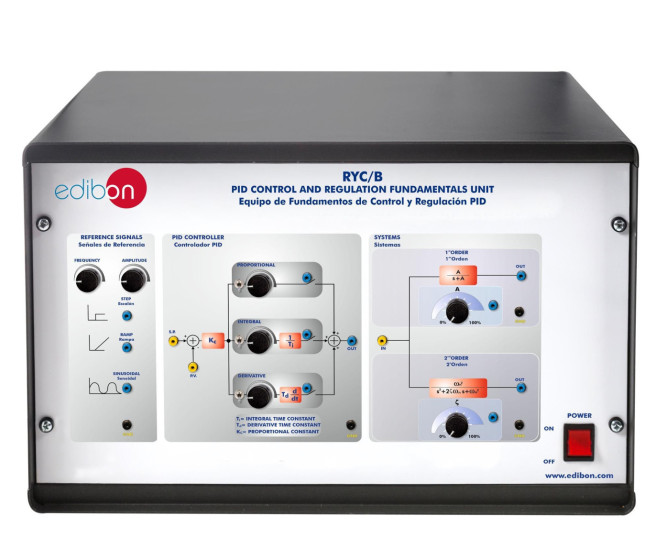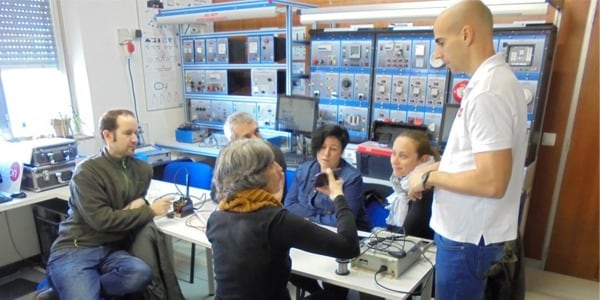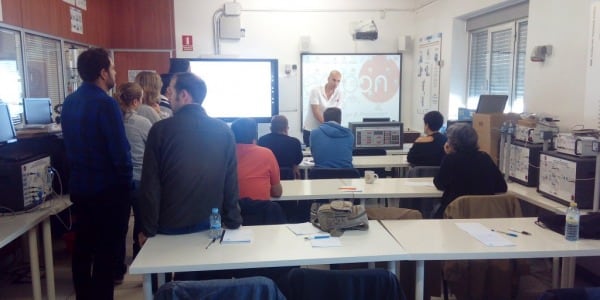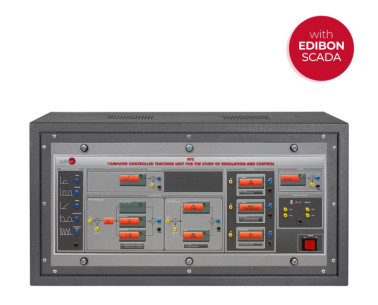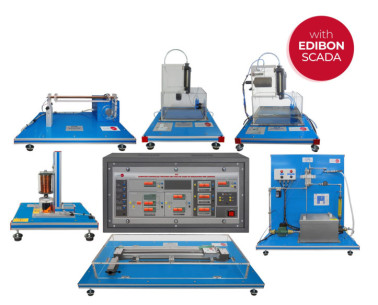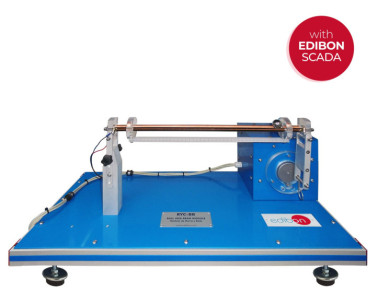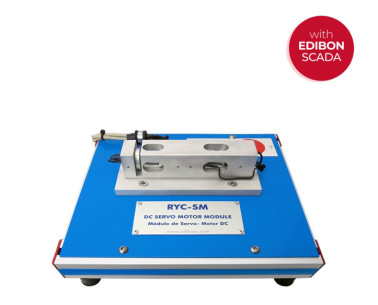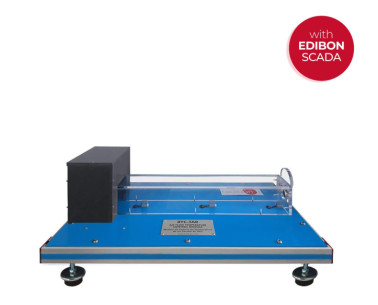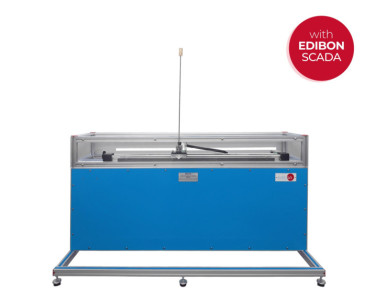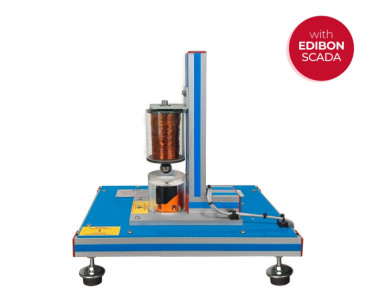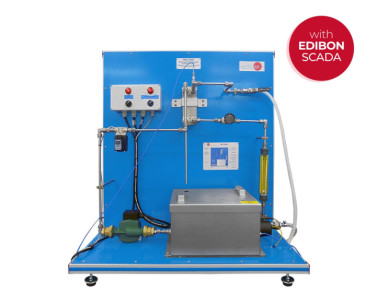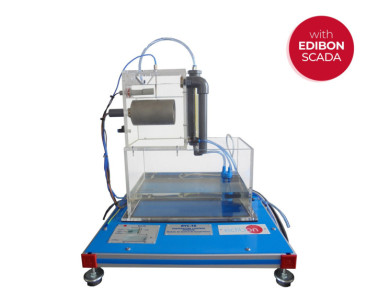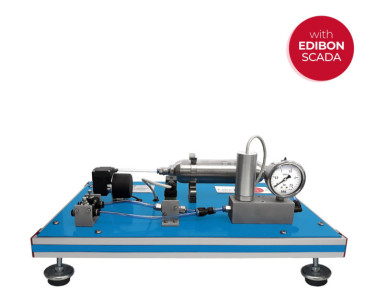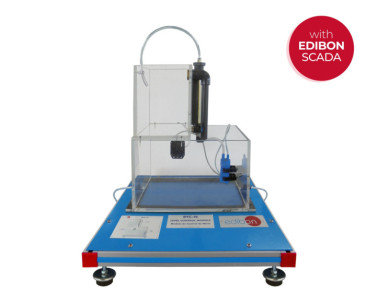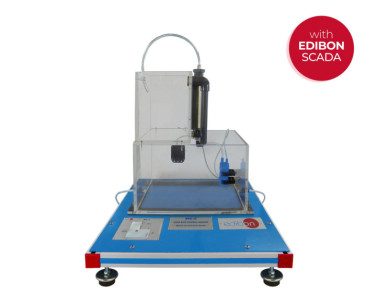RYC/B PID制御と調整の基礎装置
革新的なシステム
The PID Control and Regulation Fundamentals Unit, "RYC/B", developed by EDIBON, allows users to practically and comprehensively study the essential principles of automatic control, using first- and second-order models, and applying various types of controllers, including classical PID as well as lead and lag compensators.
研究室
関連ニュース
概要
The regulation of dynamic systems is a fundamental component of engineering, as it allows process variables to be maintained within desired limits despite external disturbances or internal changes. To achieve this, control strategies such as the PID controller are used, whose effectiveness depends on proper parameter tuning and a deep understanding of the system’s behavior.
The PID Control and Regulation Fundamentals Unit, "RYC/B", designed by EDIBON, enables users to study the core principles of automatic control in a practical and accessible way, focusing on first- and second-order systems. Thanks to its modular design, this unit facilitates detailed analysis of dynamic system responses to different input signals, as well as hands-on implementation of proportional, integral, and derivative control actions.
The "RYC/B" is divided into three main sections:
- A reference signal generator, which provides step, ramp, and sine wave inputs, all adjustable in amplitude and frequency.
- A configurable PID controller, which allows users to manually adjust the key control parameters proportional gain (Kp), integral time (Ti), and derivative time (Td) with optimized ranges for analyzing each control action individually or in combination.
- A set of dynamic systems, simulating real-world first- and second-order process behavior, enabling evaluation of system responses under different control configurations.
The unit also includes a power supply, protection fuses, and a functional block diagram displayed on the front panel to help users visualize and understand the control process.
It comes complete with all necessary cables and accessories, along with a comprehensive set of manuals covering installation, safety, maintenance, and a detailed practical guide.
As an additional element for the correct display of the signals and their response, it is recommended to use the 70 MHz Dual-Channel Digital Oscilloscope, "MED87" (not included).
The "RYC/B" is an ideal solution for introducing technicians and future engineers to the fundamentals and analysis of control systems, offering a hands-on, real-world experience with essential concepts that form the backbone of modern automation.
演習と指導の慣行
マニュアルに含まれるガイド付き実習
- Response of a first order system in time domain. (Step-response).
- Response of a first order system in time domain. ((Ramp response).
- Response of a first order system in time domain. (Sinusoidalresponse).
- Response of a first order system in frequency domain. (Sinusoidalresponse).
- Response of a second order system in time domain. (Stepresponse).
- Response of a second order system in time domain. (Rampresponse).
- Response of a second order system in time domain. (Sinusoidalresponse).
- Response of a second order system in frequency domain. (Sinusoidal-response).
- Structure of a PID controller. (Proportional-Integrative-Derivative blocks).
- PID control of a first order system in open-loop.
- PID control of a second order system in open-loop.
- PID control of a first order system in closed- loop. (Mathematical tuning).
- PID control of a first order system in closed- loop. (Experimental tuning).
- PID control of a first order system in closed- loop. (Ziegler - Nichols tuning).
- PID control of a second order system in closed- loop. (Mathematical tuning).
- PID control of a second order system in closed- loop. (Experimental tuning).
- PID control of a second order system in closed- loop. (Ziegler - Nichols tuning).
利用可能な類似の機器
補完的な機器
Computer Controlled Modular Control and Regulation Unit
調整・制御学習コンピューター制御指導用装置
バー・ボールシステム用PID制御および調整装置
DCサーボモーターのPID制御・調整装置
気流の温度のPID制御・調整装置
逆転振り子制御モジュール
磁気浮上のPID制御・調整装置
水流の温度のPID制御・調整装置
温度のPID制御・調整装置
圧力レベルのPID制御および調整装置
水位のPID制御・調整装置
流量のPID制御・調整装置
品質
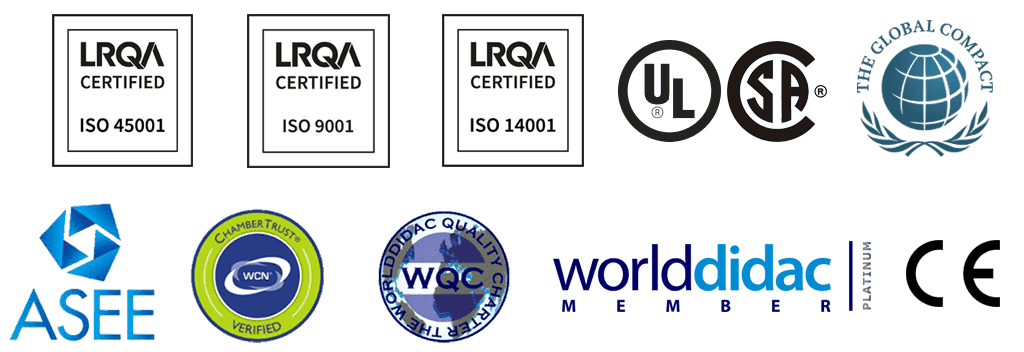
アフターサービス

 クッキーの設定
クッキーの設定

